Visualizing image compression
Accompanying the exhibition of LTM’s website at LACMA, is another work: Photograph of a beach that no longer exists, a collaboration between Marie, Marie, Kris and me. That work engaged with LTM’s use of dithering as an image compression technique in more detail.
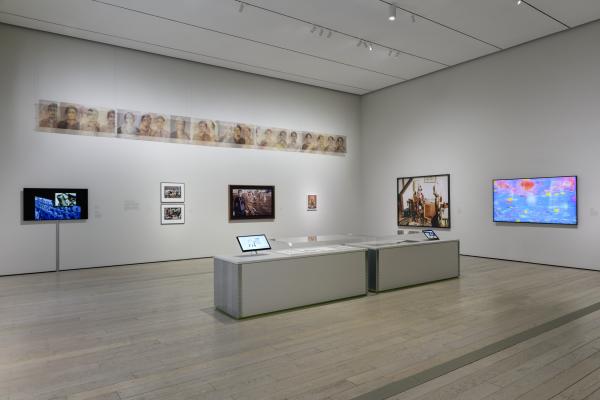
Photograph of a beach that no longer exists shows an image of a beach near Barcelona which is now gone due to the effects of climate change. Photograph is displayed in different stages of compression that illustrate how we compress images on the site. LACMA wrote a blog post about the work.
This post describes the sketching for Photograph in more detail.
Image compression on the site is achieved through four steps, which are not immediately obvious. First, we reduce the total amount of colors from 16,777,216 (24-bit full-color images) to 6. Then we shrink images to 800 pixels on the longest side. After, to simulate the missing colors, we apply a dithering algorithm with a 6 color palette and save it as a color-indexed png. Finally, we display all images at the same column width for visual consistency. That is, not in their native resolution. Thereby we either show them smaller or larger than the actual image resolution.
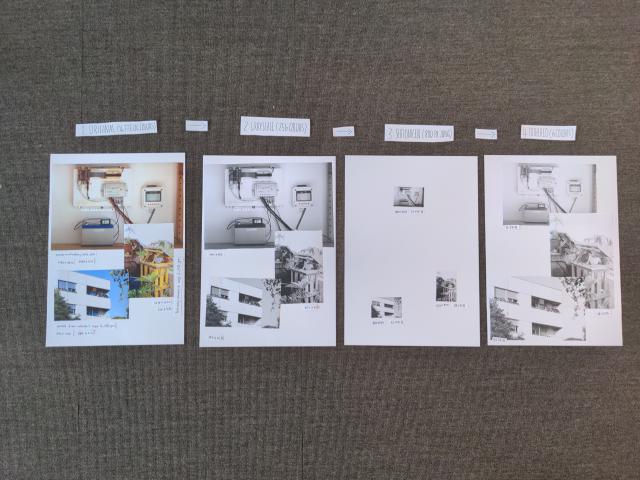
In sketching, I tried to leverage color, resolution and physical dimensions through paper prototypes in an attempt to make the compression process more visible. In printed form, the pages have a fixed resolution at 300 DPI and the different image resolutions thereby manifest as either larger or smaller images physically. The sketches are not entirely technically accurate, as the different transformations in the script happen simultaneously rather than stepwise. Nor do we have the 256 color grayscale step in between. However, this prototype is a way of showing what happens and as a narrative device some imprecision can be afforded for clarity. The images are accompanied by a file sizes as well as the dimensions in pixels in panels one and three.
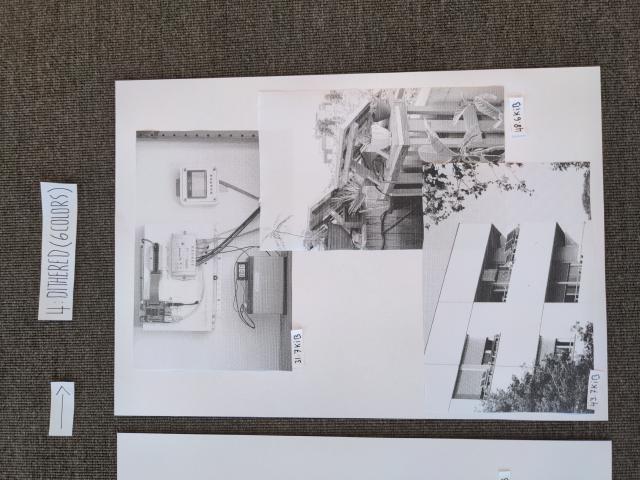

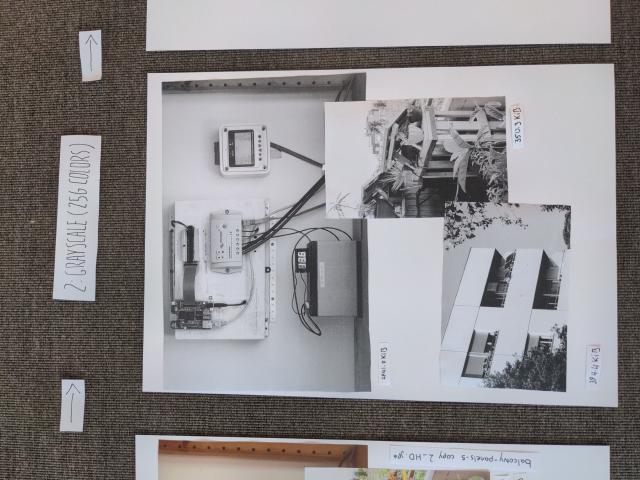
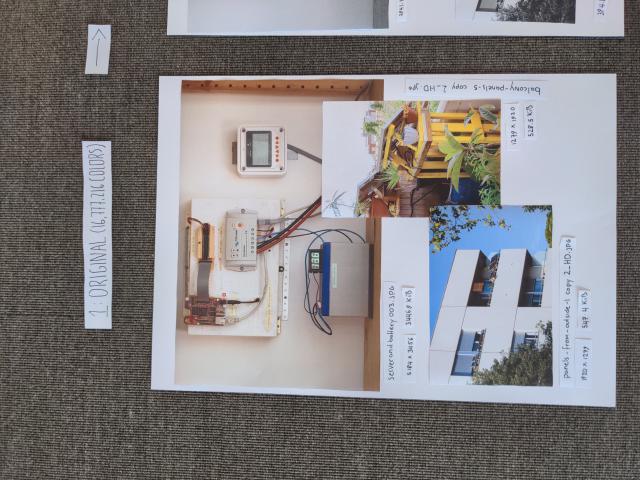
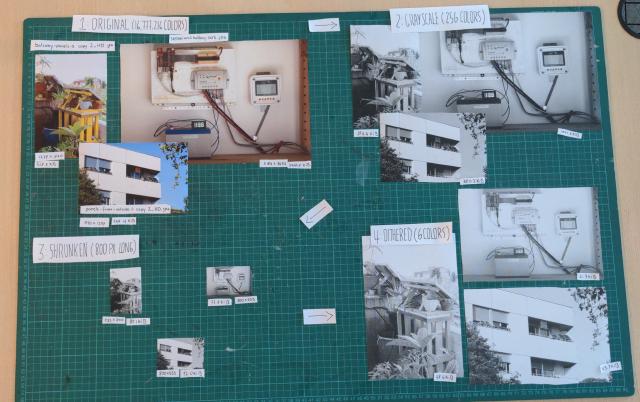
The actual physical prints were interesting because, of course, the printer used for this sketch added its own half-toning on top of the existing color reductions. As the printer only does four colors (CMYK) it uses half-toning to simulate the others. Dithering, in other words, is not neatly transferable to printed matter as printers use their own ‘compression’ and interpolation techniques.
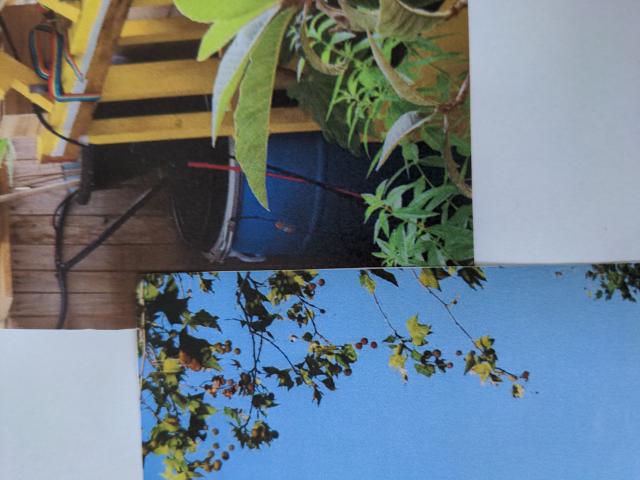
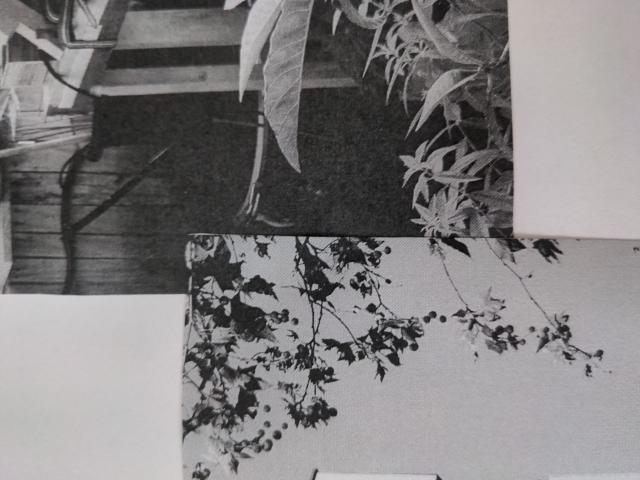
This is a bit hard to show because, on top of half-toning, the phone camera used to capture the images adds its own compression on top, as does this website.. Moreover, the phone camera images are pretty bad, but you can see them uncompressed here.
In other words, you need to see the real thing to better appreciate it. Photograph of a beach that no longer exists is on display at LACMA until the 13th of July 2025.